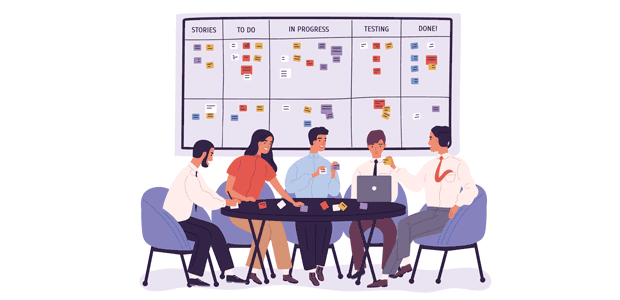
What is the difference between traditional 'change management' and employees first 'change management'?
Over 60% of organisational change initiatives fail, but change itself isn’t the stumbling block. Change is common and natural, even inevitable. Seasons change, people change, mountain ranges change — yet successful change management remains a lofty, even insurmountable challenge for many organisations. Over 60% of organisations view change as something that should not be desired, something that should be dreaded; so many leaders within organisations fight hard to create sustainable/practicable practices, systems and functions with change being the last thing they desire.
Why is that?
Organisational change happens every day as a matter of course. The challenge lies in minstituting and managing manufactured change in a deliberate and focused direction, and within a specified timeframe. Doing so allows humans to understand the change and brace for it. Personally we feel that the reason why organisations and leaders hate change is due to the feeling the change brings to the mind; the pain that it causes.
Over the last 7 years we have researched and understand a bit about neuroscience; and one thing we have learned is that the brain is a foe to change. The brain hunts and seeks consistent environments, words, sounds, smells, behaviors and experiences; thus change provides the exact opposite of that. If we are honest we empathise and understand that truth but that truth does not lead to creating an innovative business. That truth does not lead to creating a thriving inclusive culture that truth doesn't lead to creating a sustainable business model.
That truth leads to leaders making objective calls around change without involving those who will experience the bad of the change. That truth causes leaders and organisations to make reactionary decisions, that truth causes resistance and Lack of Support from those employees you need the most. That truth causes internal members to question their existence with a company; questioning their desire to remain a part of the vision long term; drives them to lose trust. The way we see it If you build a crude dam with little thought to its impact downstream, the results can be devastating.
Employees First
In 2020, heading into 2021 it's vital that startup organisations learn in the beginning stages the importance of involving their employees in the change management process; learn how to put them first. Let's break down three ways to put your employees first and involve them in this process.
- Driving Transformation with Change Leadership: Although organisational leaders define change, how it will be implemented, and how it will be measured, successful change depends on collaboration across the entire organisation. All employees, irrespective of hierarchical roles, need to be actively involved in all the stages of a change strategy. The more people involved in the change design, the more creative an initiative will be.Leaders are clearly important factors in driving and implementing change, but this is only effective if they ‘walk the talk’ and demonstrate their commitment to and belief in the change. Many of the changes occurring in today’s organisations require leaders to evolve their style and model a more co-creative and engaging approach. This is why it’s essential to choose people who have the power and ability to influence and advocate change on all levels.
- Embracing the Human Side of Change Management: Research shows that only 40% of startup employees know about their company’s goals, strategies, and tactics. Employees being aware of an organisation’s mission and goals is just the tip of the iceberg, though. Perceptions, beliefs, values, and shared assumptions are fundamental to employees gaining visibility into the organisational culture of their business and how this contributes to their goals. If employees understand the organisational environment, they will have a sense of belonging. With that in mind, organisations should offer training that clearly articulates a company mission, vision and values, as well as refresher opportunities so that these are committed to memory and embedded in daily operations.People will be more willing to change if they understand why the change is necessary and what the benefits are for them and the company. This is why training is instrumental for co-creation and the successful implementation of change management processes. Moreover, change is a fantastic opportunity to invest in staff training .With the opportunity to build and enhance skills, employees will be able to not only cope with change but also embrace it, which will, in turn, work wonders for business performance.
- One of the most important keys and steps when it comes to change management and involving employees is keeping a pulse on their perspectives of the change. No matter the macro change (good, bad or indifferent) the impact it has on the employee of 1 as an individual can be significant. We suggest startup leaders go far beyond your basic survey to understand and get a pulse, these leaders should conduct 1 on 1 meetings and dive deep into the context. They should ask questions to unpack how they view the change affecting their role, how they view the change affecting their overall perception of the brand. How they feel management handled the internal communication portion of the change, what they would recommend in the future … This data is so valuable and should be recorded to pick through later to find silver linings. If an employee feels safe enough to unpack their truth and honest perspective, they are hoping for some sort of change to occur and or respond thus it takes a bit of thoughtful unpacking of that data.
One thing’s for sure, the amount of change that startups will successfully achieve is both driven and limited by employees’ ability to adopt and adapt to change. Making a human-centric approach to change, therefore, is paramount for each and every organisation today.

